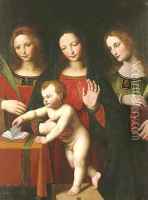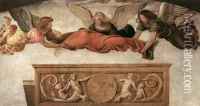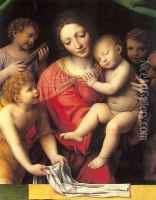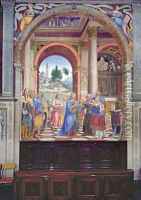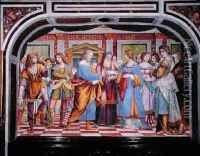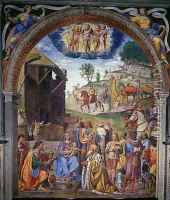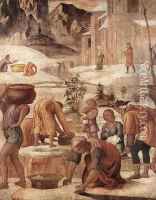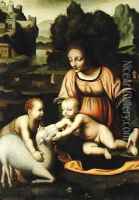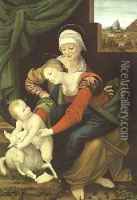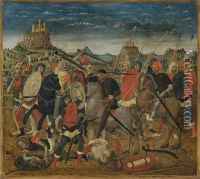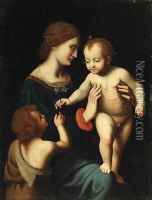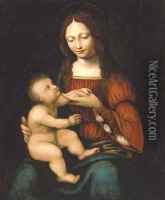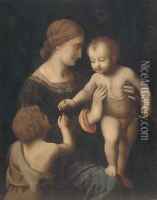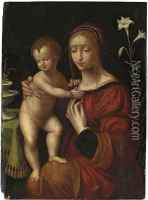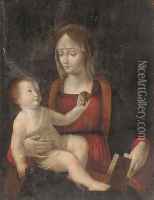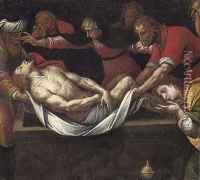Bernardino Luini Paintings
Bernardino Luini was an Italian painter from the Lombard school, born around 1480 in Dumenza, a small town near Lake Maggiore. His early life is not well documented, but he is believed to have been a pupil of Stefano Scotto in Milan, although his work shows a strong influence of Leonardo da Vinci, suggesting that he may have also been one of Leonardo's followers in Milan.
Luini is best known for his fresco work and his delicate use of color, as well as his tender and graceful figures that bear a resemblance to Leonardo's style, likely due to the pervasive influence of the master in Milan during Luini's formative years. His works often feature religious subjects, executed with a refined and gentle touch that was characteristic of the Lombard school.
One of Luini's most significant contributions to art is the fresco decoration of the Monastero Maggiore in Milan, which he executed around 1510-1530. This work showcases his skill in large-scale fresco painting and his ability to create harmonious compositions.
Despite his talent, Bernardino Luini never achieved the fame of his contemporaries such as Raphael or Michelangelo, possibly because he spent most of his career in the region around Milan rather than in the cultural centers of Rome or Florence. However, his works were appreciated for their beauty and grace, and he enjoyed a successful career with numerous commissions from churches and private patrons.
Luini's exact date of death is uncertain, but he is believed to have died around 1532. His legacy lives on through his numerous frescoes and panel paintings which can be seen in various churches and museums, primarily in Northern Italy. Today, he is recognized as one of the important figures in the Lombard school and is appreciated for his contribution to the spread of the Renaissance style in Northern Italy.
